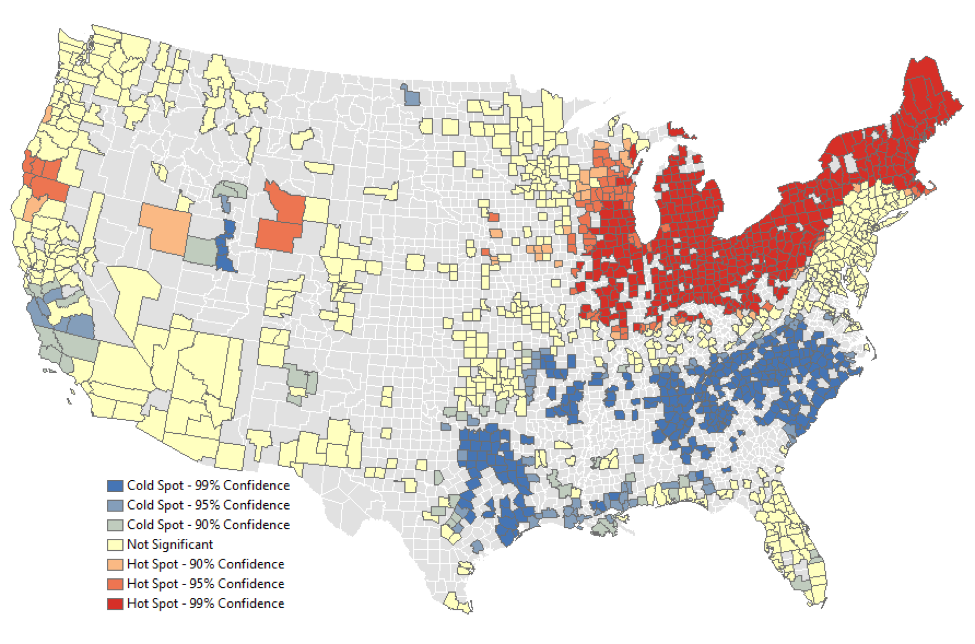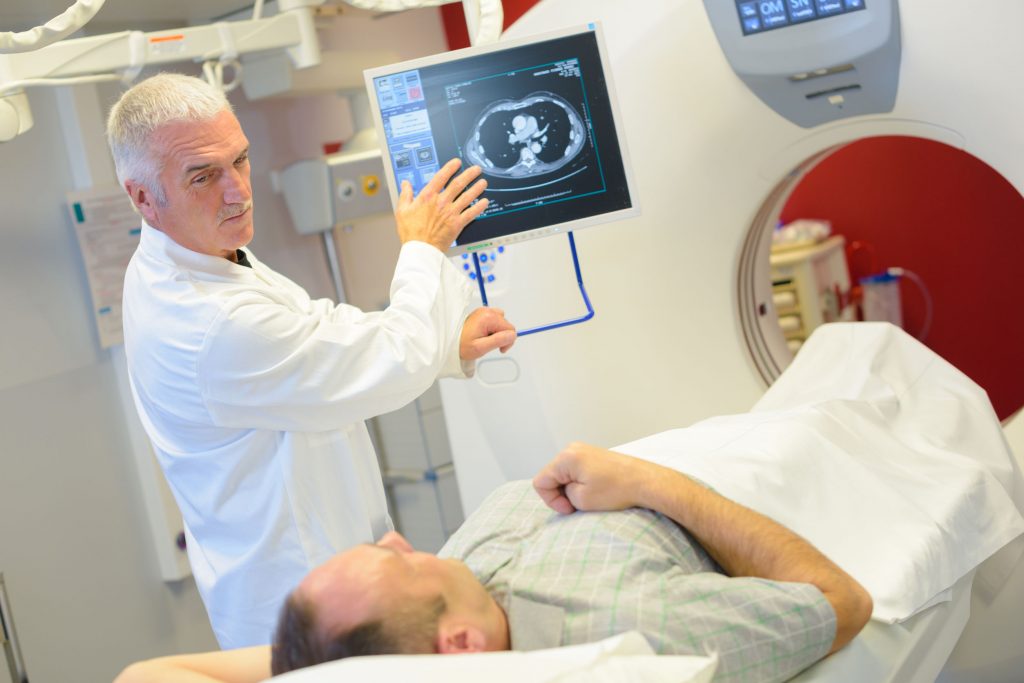Doctors are puzzled by the high rates of esophageal cancer mortality in the Great Lakes, New England
A doctor looking at mortality rates came across a disturbing picture. The Great Lakes region and New England, registered that highest mortality rates for esophageal cancer. While doctors have some indication of what could cause this phenomenon, they are asking for further research in order to find clear medical evidence that will help them save lives.
The American Cancer Society’s estimates for esophageal cancer in the United States for 2017 are worrying. It is expected that about 16,940 new esophageal cancer cases will be diagnosed, almost 80% of the new patients being male. It is also estimated that some 15,690 esophageal cancer patients will die, most of them men.
The lifetime risk of esophageal cancer in the United States is about 1 in 125 in men and about 1 in 435 in women. And while survival chances have gone up in recent decades, doctors are warning that in the last three decades, one type of esophageal cancer has gone up five folds.
Clusters in Great Lakes and New England call for action

These numbers have made doctor Joel Howard Rubenstein study the fatal cases of esophageal cancer in the United States in search for patterns that could explain the phenomenon. He specifically looked for clusters trying to see if there was a correlation between geography and esophageal cancer.
Rubenstein was concentrated on non-Hispanic whites, a group of population that is more likely to be affected by adenocarcinoma, the same type of esophageal cancer that has registered a spike in the last decades. The carefully went through death records and looked at risk factors that could influence esophageal cancer.
When Rubenstein analyzed the data from 1999 to 2014, his suspicions were proved right. Even if data was scarce for counties situated in the center of the country, the mortality rates for esophageal cancer were higher in the Great Lakes area and New England than in the Southeast.
And the clusters remained the same when the data was adjusted for risk factors like smoking, obesity or alcohol consumption.
“We found clusters of high and low mortality rates with esophageal cancer among white non-Hispanic men in the U.S. that could not be explained by the known common risk factors: age, obesity, smoking and alcohol consumption,” Rubenstein said.
The UV exposure theory

Small sample studies carried out in Europe and Australia have suggested that exposure to ultraviolet radiation could help protect and reduce cancer risks.
Investigators analyzed the longitude and the latitude coordinates of patients diagnosed with esophageal cancer in order to estimate UV exposure over their lifetimes. According to their findings, patients with higher UV radiation exposure were at a lower risk of esophageal cancer.
Using this hypothesis, Rubenstein adjusted his findings to UV exposure but the clusters still remained significantly high the two regions. And while the ultraviolet exposure could have merits, the doctor argues that there are still insufficient data to be able to take a definitive conclusion.
Looking at his map, Rubenstein thinks that there are other environmental factors that could explain the clusters he found in the Midwest and Northeast.
What next?

A first step that could be taken starting with Rubenstein’s study is to begin recommending non-Hispanic white patients to be screened for esophageal cancer, especially those living in the areas with high clusters.
The analysis also shows that there is a need for a heightened scientific dialog and this was exactly what Rubenstein hoped that his study will spark. He presented his findings during the Digestive Disease Week, the largest international gathering of physicians, researchers and academics in the fields of gastroenterology, hepatology, endoscopy and gastrointestinal surgery, on May 6 in Chicago.
Searching for answers that could explain the situation in the Great Lakes and New England, Rubenstein is working alongside To Hal Morgenstern, professor of epidemiology and environmental health science at U-M’s School of Public Health.
“I spend my free time just looking at maps trying to figure out potential linkages,” says Rubenstein in a University of Michigan article. “It’s a real mystery.”
Sixth most common cause of cancer death

Esophageal cancer is the sixth most common cause of cancer deaths worldwide. Incidence rates vary within different geographic locations and until now, in some regions, the high incidence was linked to tobacco and alcohol use or particular nutritional habits and obesity.
Signs and symptoms of esophageal cancer include difficulty swallowing, weight loss, chest pain, pressure or burning, worsening indigestion or heartburn, coughing or hoarseness.
Early esophageal cancer typically causes no signs or symptoms. Smoking, increased alcohol consumption and obesity have been considered high risk factors but the list also includes having gastroesophageal reflux disease, having bile reflux and even having an ongoing habit of consuming very hot liquids, according to the Mayo Clinic. Not eating fruits and vegetables can also be a favorizing factor.
In the world, some of the highest rates of esophageal cancer have been recorded in Malawi, Turkmenistan, Kenya, Mongolia and Uganda.